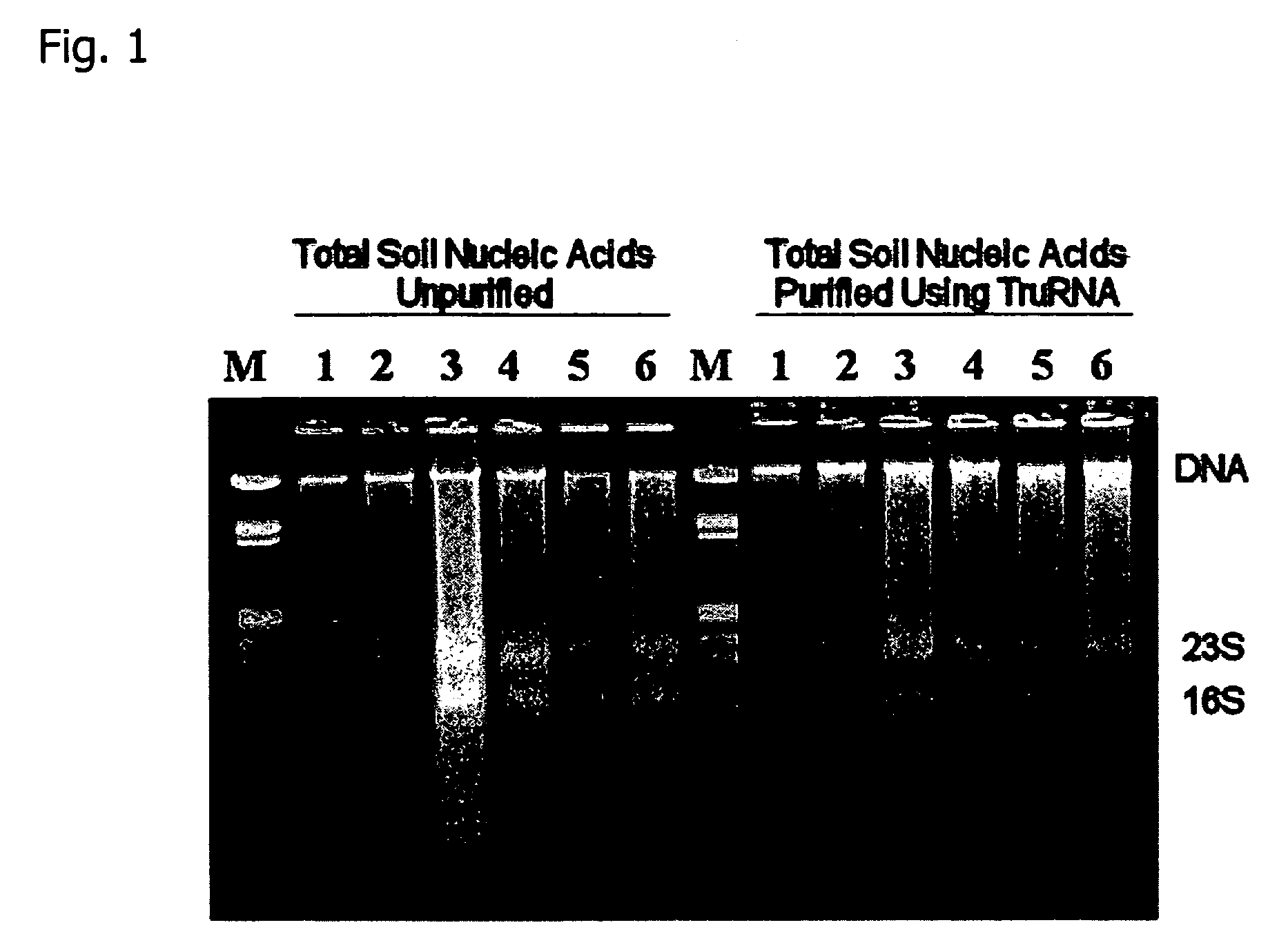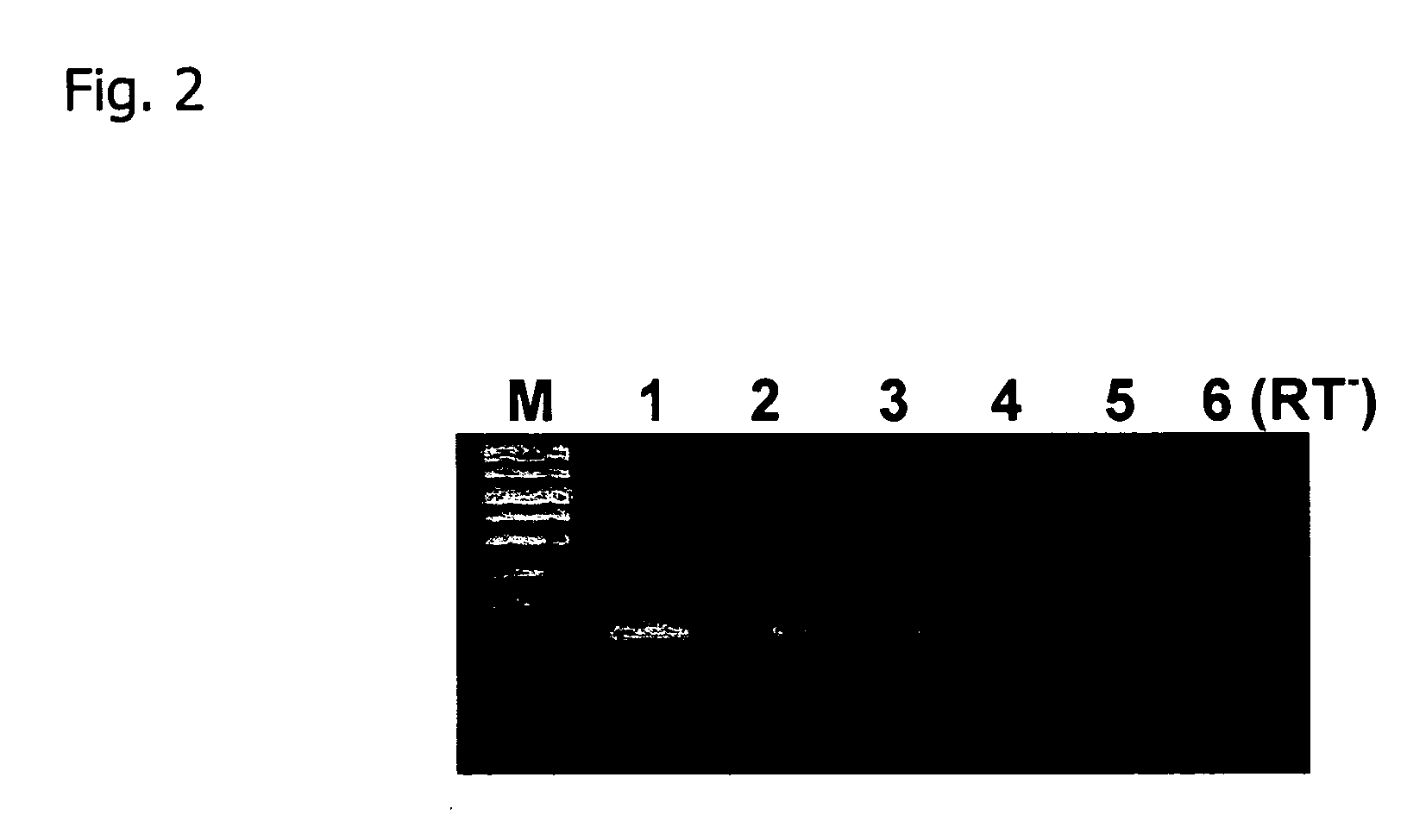Extraction of high-purity DNA and RNA
- Summary
- Abstract
- Description
- Claims
- Application Information
AI Technical Summary
Benefits of technology
Problems solved by technology
Method used
Image
Examples
example 1
[0053] Using the extraction method of the present invention total nucleic acid was extracted from soil samples as follows. FIG. 1 shows the electrophoretic profiles of unpurified total nucleic acids and total nucleic acids following purification with the method of the invention.
[0054] Total nucleic acids were extracted from 250 mg samples of soil from two deciduous forest A-horizon soil samples (lanes 1-2), two flood plain sediment samples (lanes 3-4), and two grassy rhizosphere soil samples (lanes 5-6), using the extraction procedure that is the subject of this patent. An aliquot of the total nucleic acid extracts was purified by passage through a 1 cm column prepared with 600 (l of a resin slurry containing Q-Sepharose anion exchange resin and Sephadex G:75 molecular exclusion resin 1:10 that was equilibrated in 50 mM KC2H3O4 pH 5.2 by centrifugation at 500 (g in a spin-filter. The low molecular weight component removed by the subject invention purification method contains fragme...
example 2
[0055] A single nucleic acid extraction was performed on a deciduous forest A-Horizon soil sample. FIG. 2 shows the agarose gel electrophoresis image of RTPCR product generated from eubacterial glutamine synthetase (glnA) mRNA.
[0056] The RNA was separated from the DNA using a QIAGEN RNA / DNA Mini Kit (14123), and separated into two identical aliquots. RNA purification was performed on one fraction by passage through a 1 cm column prepared with 600 (l of a resin slurry containing Q-Sepharose anion exchange resin and Sephadex G:75 molecular exclusion resin 1:10 that was equilibrated in 50 mM KC2H304 pH 5.2. The other RNA fraction was purified using a QIAGEN RNA cleanup procedure supplied with the Mini Kit (14123) that is based on anion exchange resin. The purified RNA fractions were quantified by 260 nm UV absorbance.
[0057] 5 (g aliquots of the purified RNA samples were treated with 1 U of RQ1 RNase free DNaseI (Promega) for 30 min at 37(C in a volume of 20 (1 in the presence of 2 U ...
PUM
| Property | Measurement | Unit |
|---|---|---|
| Fraction | aaaaa | aaaaa |
| Fraction | aaaaa | aaaaa |
| Molar density | aaaaa | aaaaa |
Abstract
Description
Claims
Application Information
 Login to View More
Login to View More - R&D
- Intellectual Property
- Life Sciences
- Materials
- Tech Scout
- Unparalleled Data Quality
- Higher Quality Content
- 60% Fewer Hallucinations
Browse by: Latest US Patents, China's latest patents, Technical Efficacy Thesaurus, Application Domain, Technology Topic, Popular Technical Reports.
© 2025 PatSnap. All rights reserved.Legal|Privacy policy|Modern Slavery Act Transparency Statement|Sitemap|About US| Contact US: help@patsnap.com


